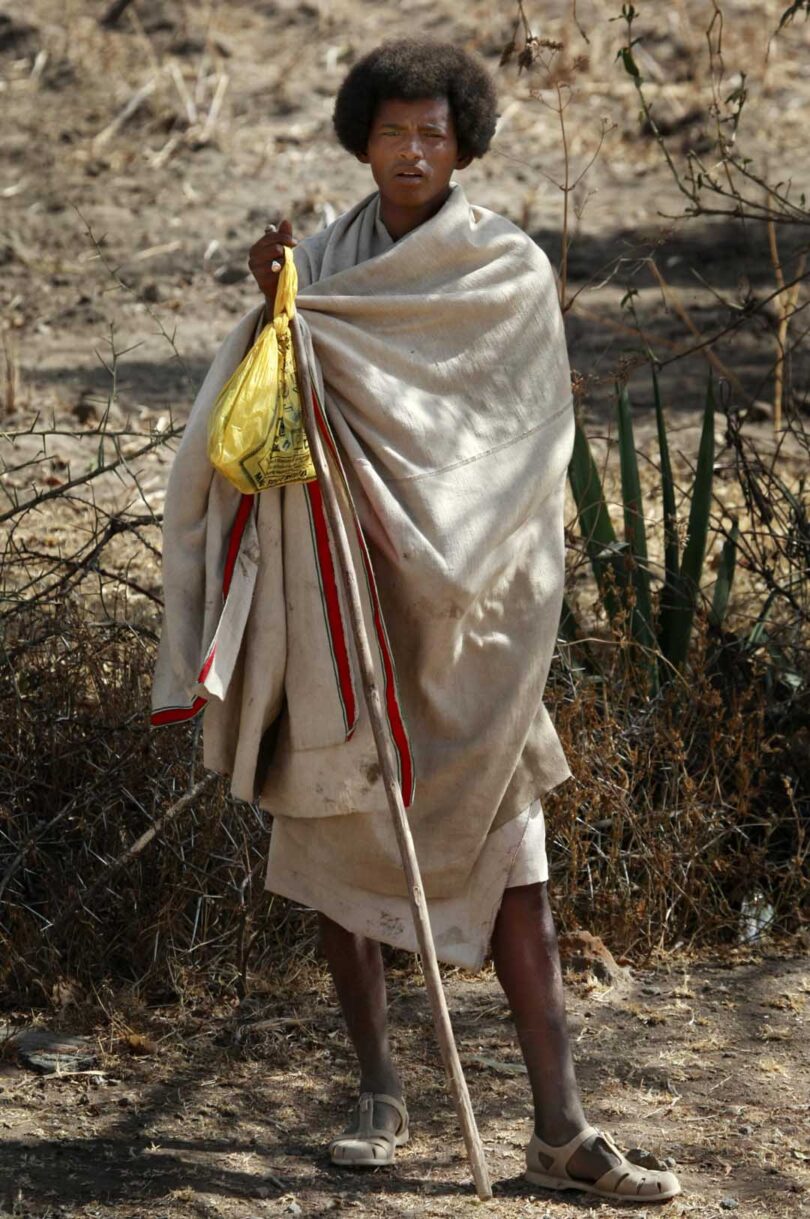Travelling through time on an adventure to uncover unique cultural rituals and experiences, it brings us to Ethiopia, a country with a deep and complex heritage. More than simply drinking coffee, for Ethiopians, the traditional coffee ceremony is an opportunity to bring people together in a gesture of love and hospitality. By learning more about this ancient established custom, we can begin to gain an insight into the intricate and beautiful culture of Ethiopia. So, join us for a journey through time to explore the Ethiopian Coffee Ceremony.
1. Introduction to the Ethiopian Coffee Ceremony
The Ethiopian Coffee Ceremony is part of Ethiopia’s rich cultural heritage and has been deeply rooted in the coffee culture of Ethiopia since time immemorial. It is a ritualistic experience that honors the history of coffee brewing and consumption in Ethiopia, and today it is an important part of social gatherings and events.
The Ethiopian Coffee Ceremony typically begins with the roasting of green coffee beans over an open flame. The roasting is done carefully, ensuring the beans are not burned and giving them a distinct aroma that sets the tone for the rest of the ceremony. As the beans are roasted, the guests are warmed by the light of the fire and the soothing sound of traditional music.
Once the roasting is complete, the beans are ground in a mortar and pestle, creating a fine powder and releasing a deep, rich aroma that fills the room. The coffee is then boiled in a clay pot over a charcoal fire, and the traditional coffee pot is passed around to the guests, who each fill their cup with the spiced libation. The traditional coffee pot is then refilled and passed around the circle, and the process is repeated until all the guests are served.
For an Ethiopian Coffee Ceremony to be considered complete, the following must be done:
- Roasting of green coffee beans over an open flame
- Grinding of the beans in a mortar and pestle
- Boiling of the ground coffee in a clay pot over a charcoal fire
- Serving each guest in a traditional coffee pot
The traditional Ethiopian Coffee Ceremony is a ritualistic event – through song, music, gathering, and conversation, the participants come together to share stories and experiences as they pass a warm cup of coffee around the circle. The ceremony symbolizes hospitality and friendship, and is a way of connecting with the culture and history of Ethiopia.
2. The Ritual’s Ancient Origins and Significance
As its name suggests, the Ethiopian Coffee Ceremony is a ritual full of layers upon layers of symbolism, secrets, and traditions; a journey through time into an ancient religious and cultural custom that binds Ethiopians of today with their ancestors.
The origin of this ceremony dates back to the 11th century, when coffee cultivation was first believed to have begun in Ethiopia’s Kaffa Region, making it the birthplace of what we now call the “coffee culture”. Since then, this activity has become an incredibly significant aspect of many Ethiopian lifestyles, who believe that hosting or attending a coffee ceremony is an essential cultural nicety, an important way to express one’s appreciation for the company of another.
Here is a breakdown of the various elements of the ceremony, their origin, and the deeper spiritual symbolism that comes with them:
- Coffee roasting: Typically, an Ethiopian woman in traditional dress will ceremoniously roast green coffee beans over an open fire, while a sweet-smelling incense is burned. This particular act is said to represent the virgin birth, woman’s sustenance of life and the aroma of the incense being the breath of God.
- The Coffee beans preparation: After the beans are roasted, they are ground into a coarse powder and placed into a clay pot or jebena along with additional spices, including cardamom and cloves. Furthermore, additional salt is sprinkled over the beans to represent purification.
- The Coffee pouring: The jebena is then placed on hot coals and left to boil. When the coffee has finished brewing, the woman pours it from a height into small, short-handled cups, known as “sini”, and distributes the coffee with a ritualized movement in order to cool the beverage.
- Serving with food: Invited guests are served coffee along with a selection of traditional Ethiopian snacks, such as popcorn, and buna-shiro, a mixed bean dish that has been spiced to perfection.
Moreover, the symbolic message of the Ethiopian Coffee Ceremony is a profound one. It is a celebration of hospitality, friendship and caring for one another, as well as an overt acceptance of one’s culture and a reminder of Ethiopia’s ancient spiritual roots.
3. The Traditional Step-by-Step Preparing Process
Tracing Ancient Roots
The roots of the Ethiopian coffee ceremony are traceable to as far back as the 15th century in Ethiopia. During that time, wild coffee beans were collectively harvested by locals and were eventually spread in the country’s churches. Through its popularity in religious institutions, soon coffee was recognized as a strong source of energy, a healing beverage, and an integral part of bursting Ethiopian culture.
The Beginnings of a Ritual
By the 16th century, the intricate Ethiopian coffee ceremony began to take shape and become an important part of social gatherings and everyday culture. Hosts, or coffee makers, ceremoniously ground the roasted beans, then added boiling water for ultimate anxiety relief, hugs, and laughter. Used as a remedy for emotional wellbeing, the ritual quickly spread throughout the country, becoming one of its most beloved customs and a respected ceremony.
Nowadays, the Ethiopian coffee ceremony is still held in its traditional form. It involves three steps:
- Boiling the water – The coffee maker brings the water to a boil in a clay pot (or jebena) and waits for the care to reach the middle of the pot before adding the coffee powder.
- Making the coffee – The ground coffee is added to the boiling water and stirred gently. The pot is then left to simmer for a few minutes.
- Serving the coffee – Once it’s ready, the coffee is poured into cups with an elegant pouring ceremony called ¨abol¨. The aromatic aroma will fill the room as the ceremony is ready to be shared.
Between the boiling water, roasting coffee beans, and making coffee, the ritual takes about 30 minutes. But even for those who are not accustomed to the taste of coffee, the aroma is enough to spark a profound sense of culture and tradition.
4. The Uniqueness of Ethiopian Coffee Ceremony
Since the 1600s, Ethiopians have celebrated coffee in a special and unique way. From dawn to dusk, the Ethiopian Coffee Ceremony has traveled through time and has been cornerstones of major holidays, celebrations, and life events. Known as the ‘Bunna’, or ‘coffee’, ceremonies, this tradition has been an integral part of Ethiopian culture for centuries.
The Ethiopian Coffee Ceremony offers a unique opportunity to be part of a powerful cultural experience. It can involve passing floral water, and, depending on the occasion, five or seven candles and colorful traditional attire. Ethiopians observe the stages of coffee making, from grinding away the coffee beans to the slow boiling of water in specially-crafted pans, and the aromatic coffee scent that brings the ceremony to life.
The Ethiopian Coffee Ceremony is both a social ritual and an expression of respect. Wrapped in tradition, it is a special way to honor the guests and tell stories. The host is afforded the honor of starting the ceremony by preparing the coffee and then pouring it three times. The coffee is served in unique small cups called cini, and should be drank with no sugar or milk.
The duration of the coffee ceremony is usually no longer than an hour. However, it is packed with stories, songs, and activities that can make it feel like a lifetime. During the ceremony, incense is often burnt to make sure that demons, called Bariya, cannot enter. Guests are expected to share compliments and respect to their host with each cup they drink.
At the end of the ritual, guests are traditionally offered popcorn, peanuts, and the uniquely flavored biscuits known as sambusas. To wrap up the ceremony, a kalebasa may be offered—placing a traditional vessel filled with incense over a charcoal burner on a small stand—to increase the spiritual vibes and to bring positive energy.
The Ethiopian Coffee Ceremony is an integral part of the country’s culture and it’s definitely an experience and tradition worth trying—even more so in countries like the United States where there’s no equivalent. From grinding and prepping, to enjoying the aroma and refreshing taste of the freshly made coffee, this ceremony is as unique and as special as it is old.
5. Fresh Roasted Coffee Beans: The Key Ingredient
At the heart of the Ethiopian coffee ceremony is the fresh roasted coffee beans and their ability to generate an aroma that triggers profound senses of nostalgia. It’s an experience that has been treasured since the 13th century. To understand what Ethiopian coffee truly entails, we must journey through time to uncover the traditions and symbolism of Joyful Coffee.
Let’s begin by considering the process of blending and roasting coffee beans. It is the key ingredient in Ethiopian coffee and is essential to unlocking the traditional flavors, from sweet to tart. The fresh roasted beans are blended with equal parts of sugar and butter, soaked in delicately-boiled water then poured with the stirring of special wooden sticks called “barbera” into each individual ceramic coffee cup with cream and a sprinkle of ground cardamom. The process is simultaneously precise and intricate, demonstrating the respect and love that goes into the ceremony. As the beans are slowly stirred, the smell of roasted coffee beans slowly fills the room.
The intense aroma combined with the traditional customs of Ethiopia have the power to transport people to a time and place the Ethiopian culture has celebrated for centuries. It is symbolic, with each pour and scoop of the beans connecting individuals to each other and to their history. This ceremony of unity brings people together, no matter the current circumstance. Coffee is the common thread that ties the culture together.
Therefore, if we truly wish to create and experience the traditional flavors of Ethiopian coffee, fresh roasted coffee beans must not be overlooked. With the right selection of beans and the precise process of blending and roasting, the Ethiopian coffee ceremony will come alive one cup at a time, bringing people together through a journey of joy and tradition.
6. Modern Adaptations of the Coffee Ceremony
The Ethiopian coffee ceremony is age-old tradition, having played a crucial role in the social life of the people of Ethiopia since the 13th century. Now, contemporary reinterpretations of the Ethiopian coffee ceremony are embracing worldwide appreciation, allowing people to enjoy the warmth and familiarity of a centuries-old practice while still modernizing it.
This journey through the modernization of the Ethiopian coffee ceremony takes into account its history while looking to the future. From talking circles to improv dance nights, the Ethiopian coffee ceremony adapts and modernizes to fit ever-evolving interests and trends – without losing its heart.
- The Talking Circle: An environment where all participants can be heard, respected, and protected, this hybrid cafe-meeting space allows for honest, open communication that encourages empathy and understanding. By itself or alongside an Ethiopian coffee ceremony, the talking circle brings Ethiopia’s tradition of entertainment and dialogue to the modern age.
- The Improv Dance Night: A beloved tradition, improv dance nights take the traditional elements of Ethiopian-style dance and modernize them for a modern setting. An interpretation of the coffee ceremony, this hybrid event brings a unique twist to the traditional setting as a way of preserving and celebrating the culture while still capturing the imaginations of modern audiences.
- The Art Walk: An event that combines Ethiopian heritage with modern art, The Art Walk reinvents the traditional Ethiopian coffee ceremony into a creative, stimulating exploration of the city. Mixing elements of the traditional Ethiopian ceremony with modern performance pieces, this hybrid event gives attendees the opportunity to experience the vibrancy of Ethiopia’s culture through a refreshingly modern lens.
By refreshing its form, themes, and structure, the Ethiopian coffee ceremony has maintained an energetic presence in contemporary culture, giving audiences an opportunity to experience an age-old tradition anew. Whether through a Talking Circle, an Improv Dance Night, or an Art Walk, the Ethiopian coffee ceremony continues to be an engaging, ever-evolving part of today’s culture.
7. Surrounding Atmosphere: Music and Incense
Music and incense complete the atmosphere of a genuine Ethiopian Coffee Ceremony. To most, music is just a soundtrack to the vibrant atmosphere. From the calming guragigna tunes to reminiscent modern songs of Ethiopian origin, the music choice can be as varied and as creative as those who offer the service.
The same can be said of the fragrant incense that often accompanies an Ethiopian Coffee Ceremony. Incense like Spendiyar from Somalia, Al-Haramain from The Middle Eastern region, Melody from Zimbabwe, and Wako from Ethiopia make for a captivating olfactory spectrum. Artists, coffee connoisseurs, and adventurous souls alike find this kind of experience a sensory delight.
But most importantly, music and incense help to establish a sense of tradition and create a distinct atmosphere. Whether it’s a special occasion or day-to-day life, the environment of the Ethiopian Coffee Ceremony stands out from the rest.
- Guragigna tunes — subdued, calming music intended to set an atmosphere.
- Modern Ethiopian songs — songs inspired by or adapted from traditional Ethiopian music.
- Spendiyar incense — a fragrant incense originating from Somalia.
- Al-Haramain incense — an aromatic incense from the Middle Eastern region.
- Melody incense — a sweet fragrance brought from Zimbabwe.
- Wako incense — a scent from Ethiopia that infuses any area it’s used.
It’s thanks to the extra sensory experiences like music and incense that the Ethiopian Coffee Ceremony stands out among coffee ceremonies around the world. Whether it’s a special event or purely for relaxation, guests are ensured a memorable experience through its use of music and incense.
8. Experiencing the Authentic Ethiopian Coffee Ceremony
A Timeless Custom
- Witness the action of ancient Ethiopians in selecting, roasting and grinding the beans by hand in a traditional act of preparation.
- Observe the repetition of the timeless salutations and mutual respect everyone present shares.
- Experience a ritual that maintains a sense of asetirity, allowing for an appreciation of still moments with friends.
The classic aroma of shaft noir moves seamlessly throughout the room and is further ignited by the burning wick from within the vessel. The traditional coffee ceremony is performed in celebration of friendship beginning with the jebena, a clay pot containing prepped coffee beans. The crafted experience honoring individuals is an element that embodies the shared hospitality that Ethiopia has been known for to this day.
An Aromatic Tradition
- Immerse yourself in the smoky billows of the berbele, a long-stemmed incense holder, stimulating the tactile senses.
- Notice the welcoming atmosphere and supportive engagement when questions arise.
- Take time to relish the warm conversation and laughter formed around the sharing of coffee.
The maddening crash of beans against the halu, a hand-turned grinder, enacting the second part of the ceremony is one of the more invigorating aspects of it. The vivacious smell of berbele when lit and its misty clouds engulfing the guests is an enchanter in its own right. Ethiopia is filled with many customs that are unique to this day and the coffee ceremony is one of its ancient forms of hospitality that bring friends closer together.
A Meticulous Process
- Watch as the coffee is skillfully roasted, highlighting the lush notes of the beans to create an exceptional cup.
- Smell the delicately balanced concoction of coffee as it is brewing and shared.
- Feel the comfort of time frozen in one place of shared meaning and revelry.
The delicacy of brewing raw coffee and serving it to others, maintaining the integrity of the flavor is indeed an impressive endeavor and respect for those present is a priority. Even after centuries, it remains a vital part of Ethiopians social life with the traditional service of sharing coffee with friends. The Ethiopian coffee ritual is an experience that can’t be replicated, but appreciated in its entirety.
9. Tips for Future Coffee Ceremony Attendants
1. Ethiopian culture values politeness and respect, so be sure to mind your manners and wear neutral colors as a sign of respect. Coffee ceremony attendants should also expect to casually converse with people in attendance as part of the ceremony.
2. Ethiopian coffees are often mixed with spices like cardamom, ginger, and cloves to create a unique, flavorful taste. Before attending a ceremony, familiarize yourself with the types of spices added to coffee to appreciate the fullest flavor.
3. At the beginning of the ceremony, an attendee will grind the coffee beans, slowly roasting them as the ceremony progresses. Coffee is typically served twice during the ceremony. The first pour is usually accompanied with a frankincense smoke and the second pour is served with cookies.
4. When drinking the coffee, it is traditional to sip from the side of your cup. This custom is meant to signify respect for the host and your fellow guests. Additionally, it is expected that you drink a small quantity of coffee in each sip.
5. During the ceremony, the host will often serve Ethiopian coffee with snacks. These treats can vary greatly, but are generally small, sweet snacks like popcorn, honey cakes or nuts.
6. Be sure to bring a small gift to honor the host. A token of appreciation, like a small piece of jewelry or flowers, is typically enough to express your gratitude.
7. Attendees should expect drinking coffee to take up to two hours. The coffee ceremony is a long, formal event and it is expected that the guest will stay for the entire ceremony.
8. Ethiopians take great pride in their coffee. Therefore, it is important to show appreciation for the festive atmosphere and the coffee being served.
9. After the ceremony, it is proper etiquette to thank everyone for their hospitality. It is also customary to thank the host with a small, traditional Ethiopian hand gesture called the “Coffee Tree Greeting”. As you leave having experienced the Ethiopian Coffee Ceremony, you will take with you a sense of legacy that cannot be found anywhere else in the world. The centuries-old process of the Ethiopian Coffee Ceremony will forever remain in your heart, and with it, a reminder of the journey through time.








